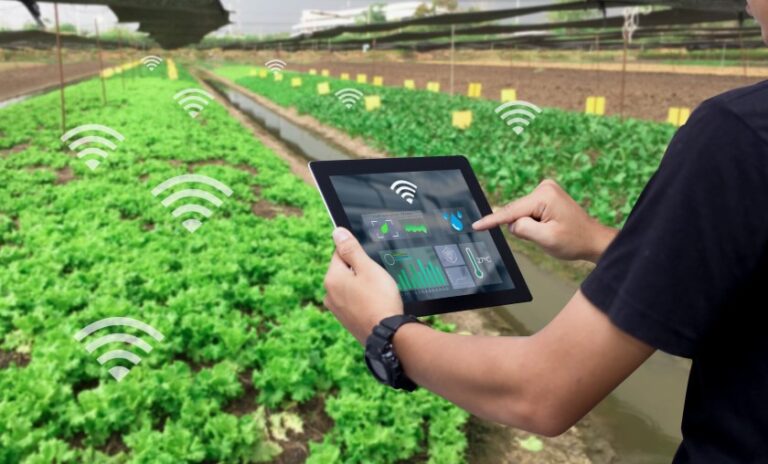The Internet of Things (IoT) has revolutionized how we interact with everyday devices, turning our homes, workplaces, and even cities into smart ecosystems. While most users are familiar with basic settings and functionalities, there’s a hidden layer of options known as the IoT hidden menus. These concealed settings offer advanced features that can enhance your smart device experience significantly. In this guide, we’ll uncover these hidden menu secrets and show you how to make the most of them.
What Is the IoT Hidden Menu?
An IoT hidden menu is a collection of advanced settings and configurations not easily accessible from the regular interface of a smart device. Manufacturers typically hide these menus to avoid unintentional tampering by users who might not be familiar with the device’s complexities. However, with the right knowledge, you can unlock powerful customization options to optimize your device’s performance.
Why Are Hidden Menus Important?
Hidden menus in IoT devices serve as gateways to advanced features, enabling users to tweak settings like connectivity, sensor sensitivity, power management, and more. These menus can help you:
- Optimize energy consumption
- Enhance device performance
- Access diagnostic tools
- Customize user interfaces
How to Access Hidden Menus in IoT Devices
Accessing hidden menus varies from one device to another, but most IoT gadgets follow certain standard procedures. Here’s a step-by-step guide to finding these menus on popular devices:
1. Smart Home Assistants (e.g., Amazon Echo, Google Home)
Most smart home assistants have diagnostic modes that can be accessed by saying specific commands or pressing certain buttons. For example:
- Amazon Echo: Say, “Alexa, go to developer mode,” or press and hold the action button for about 20 seconds.
- Google Home: Tap the device’s top surface multiple times in quick succession to trigger hidden settings.
These menus let you view detailed information about device connectivity, firmware updates, and system logs.
2. Smart TVs
Smart TVs, like Samsung or LG models, come with hidden menus that allow you to adjust picture settings, connectivity, and even unlock features like developer mode. To access these settings:
- Turn off your TV and press a specific combination of buttons (e.g., Mute + 1 + 8 + 2 + Power) on your remote.
- Navigate to the service menu where you can fine-tune picture quality, enable advanced settings, and access hardware diagnostics.
3. Smart Thermostats
For smart thermostats like the Nest, hidden menus are often accessible through the device’s hardware interface. Rotate the thermostat’s ring in a specific pattern to unlock advanced menus, where you can adjust sensor calibration, Wi-Fi settings, and power management.
4. Smart Lighting Systems
Philips Hue and similar lighting systems have hidden menus accessible via the mobile app or hardware controls. These menus offer options to customize brightness, color profiles, and even synchronize lighting with music or movies for an enhanced experience.
Hidden Menu Features That Can Boost Your Smart Device Experience

Understanding the hidden menu features of IoT devices can lead to a more seamless and efficient smart home experience. Here’s a look at some of the most beneficial hidden settings:
1. Power Optimization
Hidden menus often provide access to power management features, allowing you to adjust your device’s power consumption. You can extend battery life, reduce electricity usage, and set specific schedules for device operation.
2. Advanced Connectivity Settings
Many smart devices have hidden settings that allow you to manage Wi-Fi connections, network priorities, and even switch to less congested channels. This feature is crucial for maintaining smooth operation, especially if you have multiple devices connected simultaneously.
3. Sensor Calibration
For devices with built-in sensors (e.g., thermostats, smart cameras, motion detectors), the hidden menu can offer calibration options. This ensures that your device accurately detects changes in the environment, resulting in more efficient performance.
4. Developer Mode
Activating developer mode unlocks a suite of advanced tools, such as:
- Testing new software updates
- Accessing debugging information
- Customizing interface layouts
5. Firmware Updates
Some IoT devices allow users to access firmware update settings through hidden menus. This feature lets you manually update your device to the latest software version, even before the official rollout.
How to Enhance Security Using Hidden Menu Secrets
Security is a major concern for IoT devices. Hidden menus can offer advanced security settings, such as:
- Changing default passwords: Modify default login credentials to prevent unauthorized access.
- Enabling two-factor authentication (2FA): Add an extra layer of protection by activating 2FA through hidden settings.
- Accessing firewall settings: Fine-tune network security settings to control device access and block suspicious activity.
Common Pitfalls and How to Avoid Them
While accessing hidden menus can be beneficial, there are potential risks involved. Some common pitfalls include:
- Void Warranty: Tampering with hidden settings may void your device’s warranty.
- System Instability: Altering certain settings without proper knowledge can cause device malfunction or system crashes.
- Security Vulnerabilities: Changing network configurations could expose your device to hacking attempts.
How to Safely Access Hidden Menus
- Read the user manual: Always consult the device’s manual before making changes.
- Backup settings: Before modifying any hidden menu, create a backup of the current settings.
- Consult online forums: Platforms like Reddit and specialized tech forums often have experts who can guide you.
Real-World Applications of IoT Hidden Menus
IoT hidden menu secrets are not just for tech enthusiasts; they have practical applications in everyday life. Here are some real-world examples:
1. Energy Management in Smart Homes
By accessing the hidden menu on your smart thermostat or lighting system, you can optimize energy usage, saving on electricity bills and reducing your carbon footprint.
2. Enhancing Home Security
Advanced camera settings can be configured to adjust motion detection sensitivity or create custom alert zones, providing a more secure environment.
3. Improving Entertainment Experiences
Smart TVs and lighting systems can be fine-tuned for enhanced picture quality or synchronized lighting effects, making movie nights more immersive.
Future of IoT Hidden Menus
The future of hidden menus in IoT devices looks promising, with manufacturers increasingly incorporating advanced customization options. As technology evolves, we can expect:
- More intuitive access: Voice commands and AI-driven interfaces may make hidden menus more user-friendly.
- Increased personalization: Hidden settings will offer greater personalization, allowing users to tailor their smart devices according to their preferences.
Final Thoughts
Unlocking IoT hidden menu secrets can elevate your smart device experience, giving you access to features that aren’t available through regular settings. Whether you’re looking to optimize power usage, enhance security, or fine-tune your smart home setup, these advanced settings can make a significant difference. However, always proceed with caution and ensure you have a clear understanding of the changes you’re making to avoid potential pitfalls.
FAQs
Accessing hidden menus varies by device. Common methods include pressing a combination of buttons on your device, entering specific commands via voice assistants, or navigating through less obvious app settings. Always refer to your device’s manual or online guides for specific instructions.
Yes, accessing hidden menus can significantly improve performance. These menus often allow you to optimize power usage, enhance connectivity settings, calibrate sensors, and enable features like developer mode, which can lead to a more efficient and customized smart device experience.
In many cases, altering hidden menu settings can void your device’s warranty, especially if changes cause damage or affect functionality. It’s advisable to proceed with caution and consult your warranty terms before making any adjustments.
Common features include power optimization, advanced connectivity settings, sensor calibration, firmware updates, and security enhancements such as enabling two-factor authentication or changing default passwords.
You can enhance security by accessing hidden settings to change default passwords, enable two-factor authentication (2FA), adjust firewall configurations, and manage device access controls. These changes can help protect your smart home from unauthorized access.





